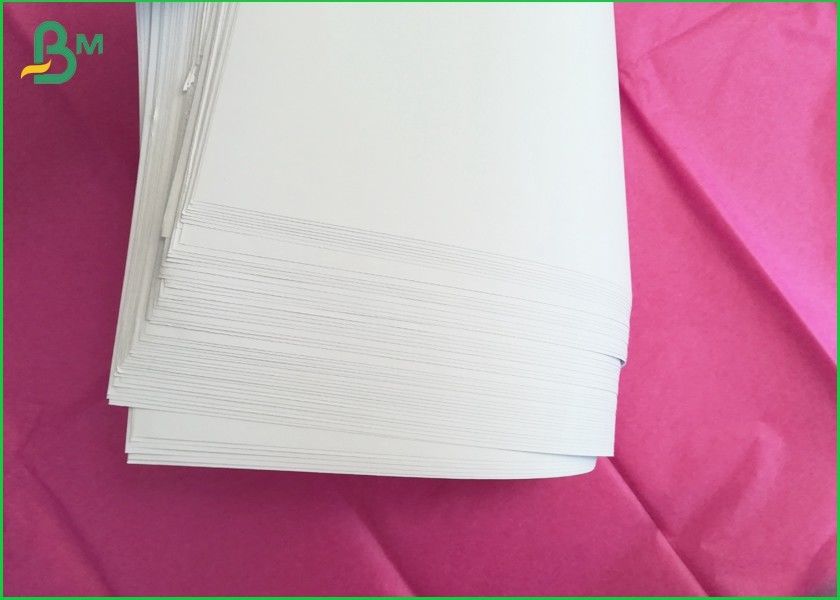Papel leve de alta gramatura: Quais são seus usos?
Aqui está o blog modificado com as imagens inseridas:
Entendendo o papel leve de alta gramatura
O papel leve de alta gramatura é um tipo único de papel que oferece uma combinação de leveza e volume, proporcionando inúmeros benefícios para várias aplicações. Nesta seção, exploraremos a definição, a medição e as características físicas desse tipo de papel.
O que é papel leve de alta gramatura?
Leve e alto papel a granel refere-se a um tipo de papel que é leve em termos de peso, mas tem um volume ou uma espessura alta em relação ao seu peso. É comumente usado em setores como o de impressão, embalagem e publicação, em que a sensação e a durabilidade do papel são importantes. papel são importantes fatores.
Em comparação com os tipos de papel padrão, o papel leve de alta gramatura papel a granel destaca-se por sua sensação volumosa e qualidade premium. Ele oferece uma espessura substancial, o que aumenta o valor percebido e a durabilidade.
Como o volume do papel é medido?
O volume do papel é normalmente medido em centímetros cúbicos por grama (cm³/g). Essa unidade representa o volume do papel em relação ao seu peso. O cálculo do volume é derivado da espessura (em milímetros) dividida pela base de peso (em gramas por metro quadrado). O valor resultante indica a densidade ou a espessura do papel.
Compreender a medição do volume do papel é essencial, pois ajuda a determinar o tipo de papel adequado para aplicações específicas. Ao considerar a medida do volume, é possível escolher um papel que atenda aos requisitos de espessura desejados.
Características físicas do papel de alta gramatura
- Espessura vs. Peso: Papel de alta gramatura oferece uma sensação mais espessa em relação ao seu peso. Essa característica é especialmente desejável em aplicações em que se deseja um produto robusto e substancial.
- Tipos de polpa utilizados: Os papéis de alto volume geralmente utilizam polpa mecânica, que é derivada de polpa de madeira de fibra longa. A polpa mecânica contribui para aumentar o volume do papel, tornando-o mais poroso e menos denso. Por outro lado, os papéis de baixa gramatura normalmente usam polpa química, o que resulta em folhas mais densas e lisas.
- Porosidade e textura: O papel de alto volume tende a ter um grau maior de porosidade e uma textura um pouco mais áspera devido ao uso de polpa mecânica. Essa característica permite uma melhor absorção da tinta e pode melhorar o apelo visual geral do material impresso.
Compreender essas características físicas de alta densidade papel é crucial para determinar sua adequação para aplicações específicas. A espessura, o tipo de celulose usada e a porosidade contribuem para as propriedades exclusivas do papel leve de alta gramatura.
Em resumo, o papel leve de alta gramatura é um tipo de papel versátil que oferece uma combinação de sensação de leveza e espessura substancial. Ele é medido usando unidades de medição de volume e se destaca por suas características físicas exclusivas. A compreensão desses aspectos ajudará a selecionar o papel leve de alta gramatura certo para várias aplicações.
Benefícios e vantagens do papel leve de alta gramatura
O papel leve de alta gramatura oferece inúmeros benefícios e vantagens que o tornam uma escolha popular para várias aplicações. Da eficiência de custo à sustentabilidade, esse tipo de papel oferece características exclusivas que atendem a diferentes setores. Nesta seção, exploraremos as vantagens do uso do papel leve de alta gramatura, sua contribuição para a sustentabilidade e os benefícios relacionados ao custo que ele oferece.
Quais são as vantagens de usar papel leve de alta gramatura?
…
…
Como o papel de alta gramatura contribui para a sustentabilidade?
…
…
Quais são os benefícios relacionados ao custo do papel de alto volume?
…
…
Em conclusão, o papel leve de alta gramatura oferece uma série de vantagens que o tornam uma opção valiosa para empresas de vários setores. Sua eficiência de custo, durabilidade e sensação premium o tornam adequado para aplicações que vão desde a impressão até a embalagem e a publicação. Além disso, o papel de alta gramatura contribui para os esforços de sustentabilidade por meio da redução do uso de matéria-prima e dos benefícios ambientais da polpa mecânica. Por escolha de papel de alta gramaturaCom a adoção do sistema de gestão de resíduos, as empresas podem aproveitar os benefícios relacionados ao custo da economia de longo prazo e do impacto econômico e, ao mesmo tempo, ajudar a proteger o meio ambiente.
Aplicações e escolha do papel de alto volume certo
Quais são as aplicações comuns do papel leve de alta gramatura?
1. Impressão (livros, revistas)
…
2. Embalagem (proteção, apelo visual)
…
3. Produtos especiais (folhetos, cartões de visita)
…
Como escolher o tipo certo de papel de alto volume?
1. Objetivo
…
2. Técnica de impressão
…
3. Comparação de graus e seus usos específicos
…
Onde você pode comprar papel leve e de alta qualidade para grandes volumes?
1. Recomendações do fornecedor
…
2. Importância do teste de amostras antes das compras em massa
…
3. Suporte ao cliente e opções de personalização
…
Concluindo, o papel leve de alta gramatura encontra aplicações em vários setores, como impressão, embalagem e produtos especiais. Ao escolher o tipo certo de papel de alta gramatura, considere fatores como a finalidade do seu projeto, a técnica de impressão envolvida e as características específicas de cada tipo. Obtenha o papel de fornecedores idôneos que ofereçam testes de amostras, excelente suporte ao cliente e opções de personalização. Seguindo essas diretrizes, você pode garantir que escolherá o papel de alta gramatura correto. papel a granel para suas necessidades específicas.
Perguntas frequentes sobre papel leve de alta gramatura
O que é papel leve de alta gramatura?
O papel leve de alta gramatura refere-se a um tipo de papel que é leve, mas tem uma espessura substancial em relação ao seu peso, o que o torna ideal para setores como impressão, embalagem e publicação, nos quais a sensação e a durabilidade são cruciais.
Como o volume do papel é medido?
O volume do papel é medido em centímetros cúbicos por grama (cm³/g), calculado pela divisão da espessura do papel (em milímetros) por sua gramatura (em gramas por metro quadrado), indicando a densidade ou espessura do papel.
Quais são as características físicas do papel de alta gramatura?
O papel de alta gramatura é caracterizado por um toque mais espesso em relação ao seu peso, geralmente feito com polpa mecânica que aumenta a porosidade e a textura, tornando-o adequado para aplicações que exigem durabilidade e boa absorção de tinta.
Quais são as vantagens de usar papel leve de alta gramatura?
O uso de papel leve de alta gramatura oferece eficiência de custo por meio da redução do peso e dos custos de envio, durabilidade com um toque premium e aplicações versáteis em impressão, embalagem e publicação, entre outros setores.
Como o papel de alta gramatura contribui para a sustentabilidade?
O papel de alta gramatura contribui para a sustentabilidade, pois exige menos matéria-prima para atingir o mesmo volume, reduzindo o impacto ambiental e o desmatamento devido ao uso eficiente da polpa mecânica.
Em resumo, o papel leve de alta gramatura é um tipo único. Ele oferece benefícios como eficiência de custo, durabilidade e sustentabilidade. É ótimo para impressão, embalagem e produtos especiais. Ao escolher esse papel, considere suas necessidades específicas e experimente amostras primeiro. Alto volume O papel oferece um prêmio sensação e economia de longo prazo. Escolha sabiamente e aproveite suas muitas vantagens em seus projetos.





